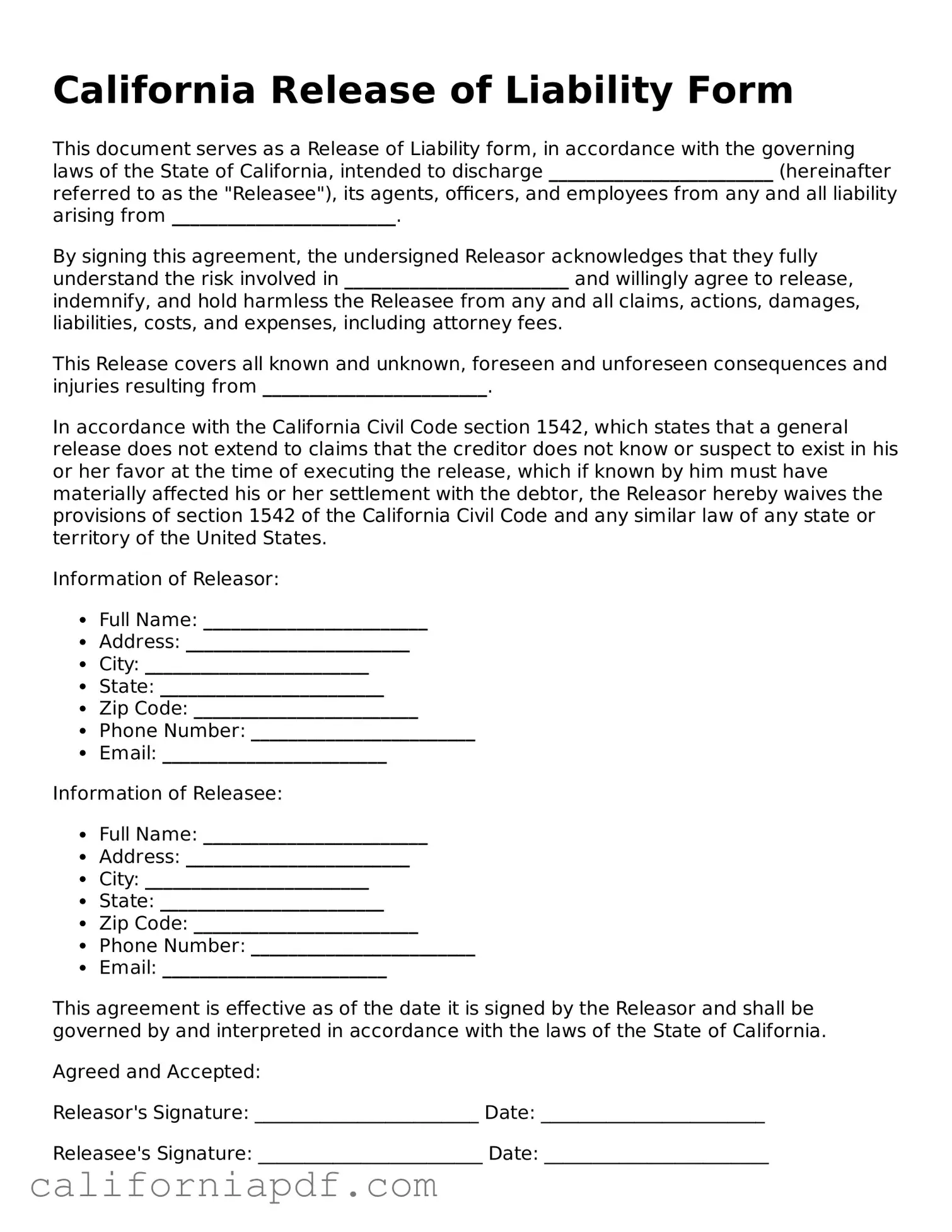California Release of Liability Form
This document serves as a Release of Liability form, in accordance with the governing laws of the State of California, intended to discharge ________________________ (hereinafter referred to as the "Releasee"), its agents, officers, and employees from any and all liability arising from ________________________.
By signing this agreement, the undersigned Releasor acknowledges that they fully understand the risk involved in ________________________ and willingly agree to release, indemnify, and hold harmless the Releasee from any and all claims, actions, damages, liabilities, costs, and expenses, including attorney fees.
This Release covers all known and unknown, foreseen and unforeseen consequences and injuries resulting from ________________________.
In accordance with the California Civil Code section 1542, which states that a general release does not extend to claims that the creditor does not know or suspect to exist in his or her favor at the time of executing the release, which if known by him must have materially affected his or her settlement with the debtor, the Releasor hereby waives the provisions of section 1542 of the California Civil Code and any similar law of any state or territory of the United States.
Information of Releasor:
- Full Name: ________________________
- Address: ________________________
- City: ________________________
- State: ________________________
- Zip Code: ________________________
- Phone Number: ________________________
- Email: ________________________
Information of Releasee:
- Full Name: ________________________
- Address: ________________________
- City: ________________________
- State: ________________________
- Zip Code: ________________________
- Phone Number: ________________________
- Email: ________________________
This agreement is effective as of the date it is signed by the Releasor and shall be governed by and interpreted in accordance with the laws of the State of California.
Agreed and Accepted:
Releasor's Signature: ________________________ Date: ________________________
Releasee's Signature: ________________________ Date: ________________________
Witness's Signature: ________________________ Date: ________________________
